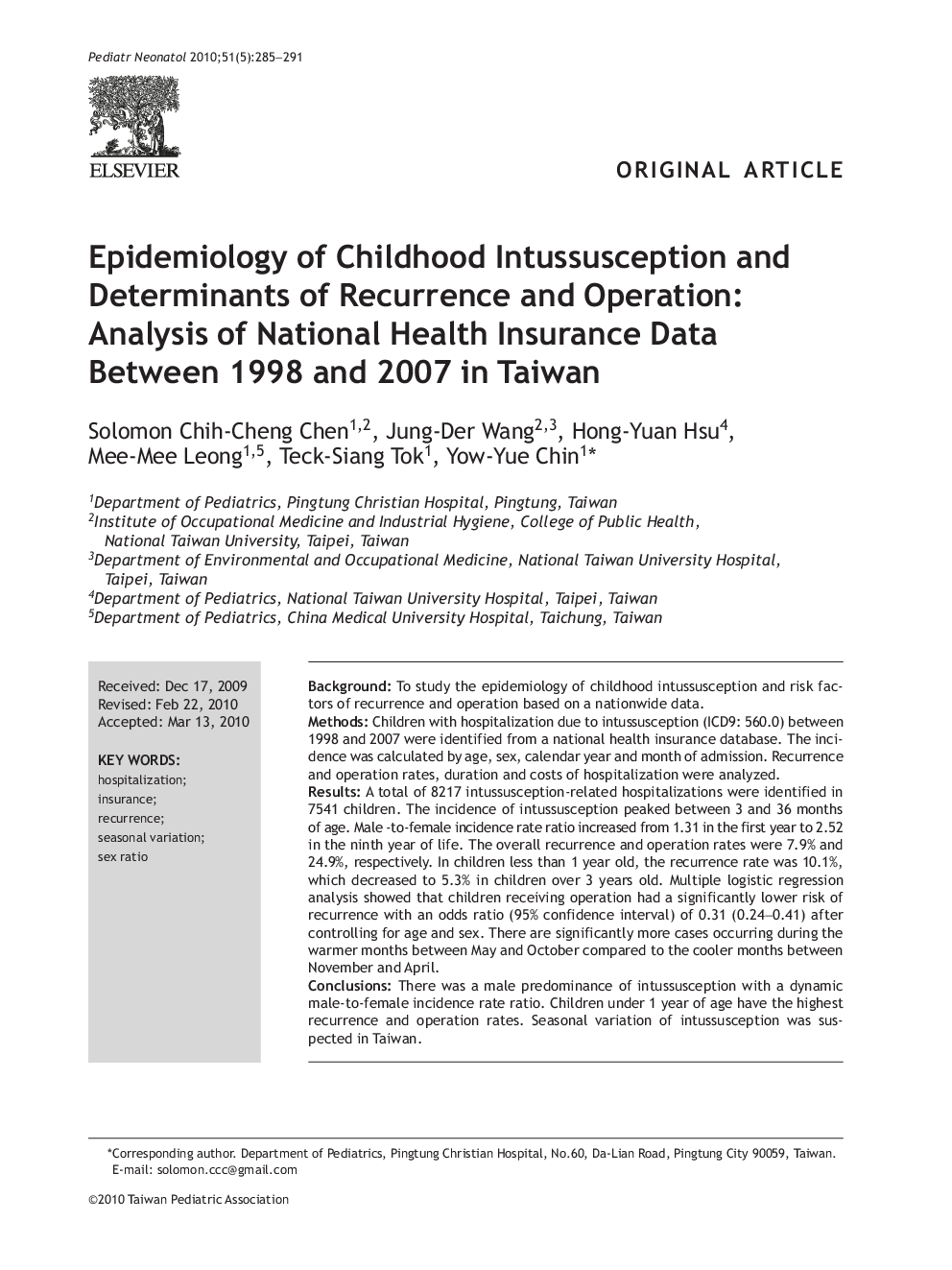| Article ID | Journal | Published Year | Pages | File Type |
|---|---|---|---|---|
| 4175399 | Pediatrics & Neonatology | 2010 | 7 Pages |
BackgroundTo study the epidemiology of childhood intussusception and risk factors of recurrence and operation based on a nationwide data.MethodsChildren with hospitalization due to intussusception (ICD9: 560.0) between 1998 and 2007 were identified from a national health insurance database. The incidence was calculated by age, sex, calendar year and month of admission. Recurrence and operation rates, duration and costs of hospitalization were analyzed.ResultsA total of 8217 intussusception-related hospitalizations were identified in 7541 children. The incidence of intussusception peaked between 3 and 36 months of age. Male -to-female incidence rate ratio increased from 1.31 in the first year to 2.52 in the ninth year of life. The overall recurrence and operation rates were 7.9% and 24.9%, respectively. In children less than 1 year old, the recurrence rate was 10.1%, which decreased to 5.3% in children over 3 years old. Multiple logistic regression analysis showed that children receiving operation had a significantly lower risk of recurrence with an odds ratio (95% confidence interval) of 0.31 (0.24-0.41) after controlling for age and sex. There are significantly more cases occurring during the warmer months between May and October compared to the cooler months between November and April.ConclusionsThere was a male predominance of intussusception with a dynamic male-to-female incidence rate ratio. Children under 1 year of age have the highest recurrence and operation rates. Seasonal variation of intussusception was suspected in Taiwan.
